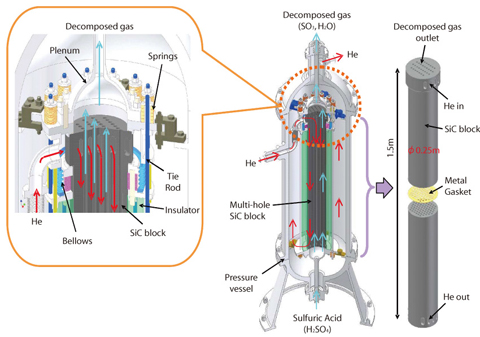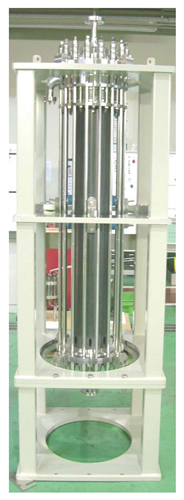
Fig.7-24 Concept of sulfuric acid decomposer (30m3-H2/hr class)

Fig.7-25 Prototype
We have been conducting R&D on both the HTGR and the IS process for CO2-emission free production of hydrogen, two key technologies of future potential energy systems that are expected to contribute to national energy security as well as to global environmental protection. The IS process decomposes water to produce hydrogen via thermo-chemical reactions of sulfur and iodine using heat supplied by HTGR.
Development of the chemical processing reactors presents challenges, the most difficult of which is material resistance against the extremely corrosive process chemicals such as sulfuric acid. In the case of the sulfuric acid decomposer, an essential chemical reactor used to vaporize sulfuric acid concentrate and decompose it into sulfur trioxide and water, not only material corrosion resistance but also efficient heat transfer from HTGR-heated helium gas to the sulfuric acid fluid must be considered. This has led to the selection of silicon carbide (SiC) to be the structural material of core heat exchanging unit, since it has superior corrosion resistance and high thermal conductivity. The concept developed for the decomposer (Fig.7-24) consists of a column of stacked multi-hole cylindrical SiC blocks, the structural unit of heat exchanger where sulfuric acid and helium gas flow in separate, adjacent holes. The blocks are secured and connected to metallic components of the decomposer using gaskets, springs, bellows and tie rods. The structure of SiC ceramic block is made simple to facilitate fabrication. The mechanism of a combination of springs, bellows and gaskets secures gas tightness in spite of the large differential thermal expansion between the ceramic and metallic structural elements. The decomposer can be scaled up simply by stacking of more blocks in the column. A prototype of the SiC blocks and of the main components of the decomposer was made as shown in Fig.7-25 and manufacturing feasibility of the structure was confirmed.
This achievement will accelerate the R&D on nuclear hydrogen production underway in the world. This technology may also be utilized in chemical industries which handle corrosive chemicals.
The prototype production was entrusted by MEXT to JAEA.
<Previous: 7-9 | Next: 8 Nuclear Fuel Cycle Technological Development >